Table of Contents
Mithila Tourist Places | Top 10 Tourist Places of Mithila
Mithila, also known as Tirhut or the Mithila region, is a historically and culturally significant area located in the northern part of India, primarily spanning across the modern-day states of Bihar and a part of Nepal. Revered for its ancient traditions, vibrant art, and profound spirituality, Mithila is a land that has captivated the hearts and minds of scholars, artists, and travelers for centuries.
Let’s explore top 10 tourist places of Mithila:
- Janakpur Dham,Janakpur
- Darbhanga Fort,Darbhanga
- Punaura Dham,Sitamarhi
- Ahilya Asthan,Darbhanga
- Chamunda Asthan,Muzaffarpur
- Mata Shyama Kali Mandir,Darbhanga
- Shri Ugratara Asthan Mahishi,Saharsa
- Chandradhari Museum,Darbhanga
- Rajnagar Ruins,Madhubani
- Vikramshila University Ruins,Bhagalpur
1. Janakpur Dham : Mithila Tourist Places
Janakpur Dham, Situated in the center of Nepal’s Mithila region, is a highly esteemed pilgrimage destination and a cultural treasure trove. For Hindu devotees and tourists wishing to fully experience the region’s spiritual and cultural legacy, Janakpur Dham, steeped in mythology and history, is of great significance.
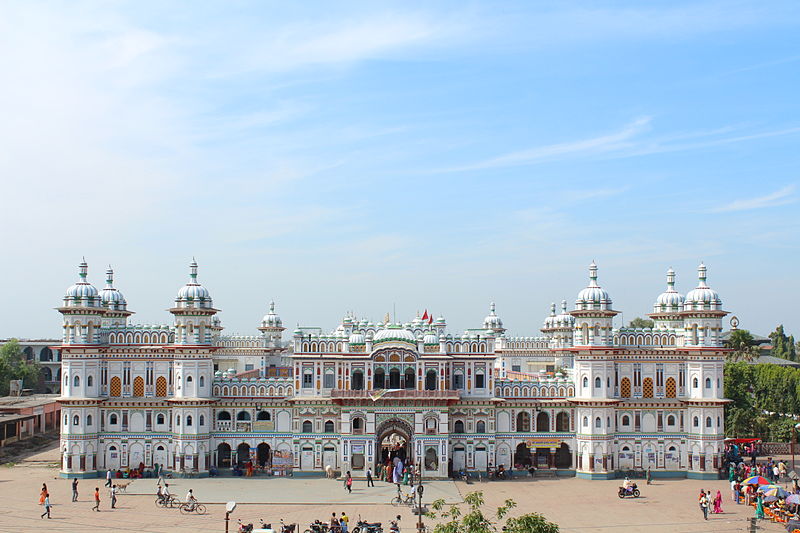
1. Birthplace of Goddess Sita: Janakpur is widely believed to be the birthplace of Goddess Sita, the consort of Lord Rama and a central figure in the Hindu epic, Ramayana. According to legend, King Janak found Sita while plowing a field, and thus, she came to be known as Janaki. The city’s connection to Goddess Sita infuses it with profound religious significance, drawing pilgrims and devotees from all over the world.
2. Janaki Mandir: The crown jewel of Janakpur Dham is the majestic Janaki Mandir, a stunning Hindu temple dedicated to Goddess Sita. Built-in the traditional Rajasthani architectural style in 1911 by Queen Brisabhanu Kunwari of Tikamgarh, this grand structure boasts intricate carvings, ornate pillars, and vibrant paintings that depict scenes from the Ramayana. The temple’s sanctum sanctorum houses the sacred idol of Goddess Sita, attracting throngs of devotees who come to seek her blessings.
3. Ram Janaki Vivah Mandap: Adjacent to the Janaki Mandir lies the Ram Janaki Vivah Mandap, a sacred pavilion commemorating the divine marriage of Lord Rama and Goddess Sita. This ornate structure features exquisite carvings and sculptures depicting the wedding ceremony of the divine couple. Pilgrims flock to this site to witness reenactments of the Ramayana and participate in religious rituals and festivities, especially during the annual Vivah Panchami celebration.
4. Bibaha Panchami Festival: One of the most significant festivals celebrated in Janakpur Dham is Bibaha Panchami, which commemorates the divine wedding of Lord Rama and Goddess Sita. During this auspicious occasion, the Ram Janaki Vivah Mandap comes alive with vibrant decorations, cultural performances, and religious ceremonies. Devotees from far and wide gather to witness the grand festivities and seek the blessings of the divine couple for marital bliss and prosperity.
5. Mithila Art and Culture: Janakpur Dham is also renowned for its rich artistic heritage, particularly the vibrant Mithila art form. Visitors can explore the Mithila Art Gallery and witness firsthand the intricate paintings and sculptures that depict scenes from Hindu mythology and everyday life. The city’s bustling markets offer a treasure trove of traditional handicrafts, textiles, and souvenirs, providing an opportunity to immerse oneself in the local culture and craftsmanship.
2. Darbhanga Fort : Mithila Tourist Places
The Darbhanga Fort stands as a magnificent testament to the rich cultural heritage and architectural splendor of the region. With its towering walls, ornate gates, and sprawling courtyards, the fort serves as a symbol of the illustrious legacy of the Darbhanga Raj family, who once ruled over the region.

1. Historical Significance: Constructed in the 18th century by Maharaja Lakshmeshwar Singh of the Darbhanga Raj family, the Darbhanga Fort served as the ancestral seat of the royal dynasty for centuries. The fort played a pivotal role in the political, cultural, and economic life of the region, serving as a center of governance, commerce, and cultural patronage.
2. Architectural Marvel: The Darbhanga Fort is renowned for its impressive architecture, blending elements of Mughal, Rajput, and European styles. The fort’s imposing walls, built of red bricks and stone, stand as a testament to the craftsmanship and engineering prowess of the artisans of yesteryears. Intricate carvings, arched gateways, and ornamental motifs adorn the fort’s façade, showcasing the grandeur and opulence of its erstwhile rulers.
3. Cultural Patronage: Under the patronage of the Darbhanga Raj family, the fort flourished as a center of culture and learning. The royal court of Darbhanga was renowned for its patronage of art, literature, music, and dance, attracting scholars, artists, and performers from far and wide. The fort’s sprawling courtyards and majestic halls served as venues for extravagant festivals, performances, and cultural events, fostering a vibrant atmosphere of creativity and intellectual exchange.
4. Heritage Preservation: In recent years, efforts have been made to preserve and restore the Darbhanga Fort as a heritage site of national importance. Conservation initiatives have been undertaken to safeguard the fort’s architectural integrity and cultural significance, ensuring that future generations can continue to marvel at its splendor. The fort’s rich history and cultural heritage make it a popular destination for tourists, historians, and architecture enthusiasts alike, who flock to explore its storied halls and picturesque surroundings.
5. Cultural Events and Festivals: The Darbhanga Fort serves as a venue for various cultural events, festivals, and exhibitions throughout the year, showcasing the region’s rich artistic heritage and cultural traditions. From classical music concerts and dance performances to art exhibitions and heritage walks, the fort’s premises come alive with activity, offering visitors a glimpse into the vibrant cultural tapestry of Darbhanga and the Mithila region.
3. Punaura Dham : Mithila Tourist Places
Punaura Dham stands as a beacon of spiritual enlightenment and cultural heritage, embodying the timeless values of devotion, righteousness, and harmony. As pilgrims and visitors flock to its sacred precincts, they are enveloped in a sense of divine grace and tranquility, finding solace in the embrace of Raja Janak’s benevolent presence. Indeed, Punaura Dham is not merely a place of worship but a sanctuary of devotion, where the soul finds refuge and the spirit soars in reverence to the eternal truths of dharma and divinity.
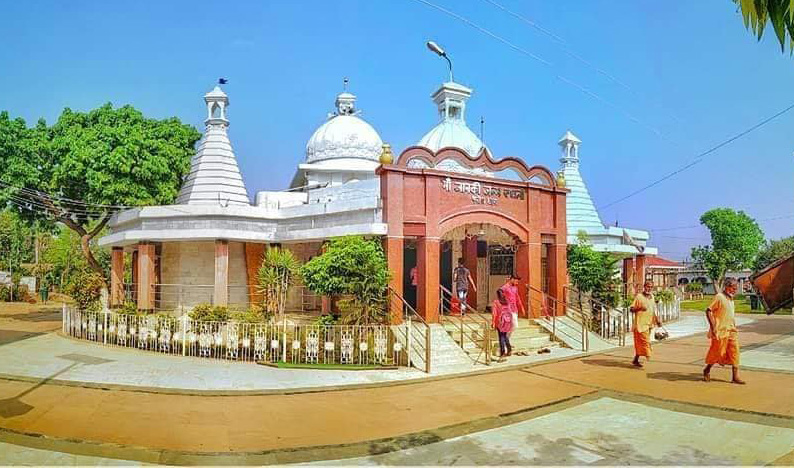
1. Birthplace of Raja Janak: Punaura Dham is believed to be the birthplace of Raja Janak, the legendary king of Mithila and father of Goddess Sita. According to Hindu mythology, Raja Janak was renowned for his wisdom, righteousness, and devotion to Lord Rama. Punaura Dham thus holds a special place in the hearts of devotees who revere Raja Janak as a symbol of dharma (righteousness) and spiritual enlightenment.
2. Raja Janak Temple: At the heart of Punaura Dham lies the magnificent Raja Janak Temple, dedicated to the illustrious king and his lineage. The temple’s architecture exudes a sense of grandeur and reverence, with its towering spires, intricately carved pillars, and ornate facades. Inside the sanctum sanctorum, devotees offer prayers and seek blessings, paying homage to the revered lineage of Raja Janak and his divine connection to Lord Rama and Goddess Sita.
3. Spiritual Retreat: Punaura Dham offers a tranquil retreat for seekers of spiritual solace and inner peace. Surrounded by lush greenery and serene landscapes, the sacred precincts of the temple provide a serene ambiance conducive to meditation, reflection, and prayer. Pilgrims embark on a spiritual journey, seeking to connect with the divine essence of Raja Janak and the timeless teachings of dharma imparted by the revered king.
4. Festivals and Celebrations: Throughout the year, Punaura Dham reverberates with the joyous celebrations of festivals and religious observances. From the grand festivities of Janmashtami and Ram Navami to the solemn rituals of Guru Purnima and Diwali, the temple premises come alive with devotional fervor and cultural vibrancy. Pilgrims partake in rituals, bhajans (devotional songs), and religious discourses, fostering a sense of community and spiritual communion.
5. Cultural Heritage: Punaura Dham serves as a custodian of Mithila’s rich cultural heritage and religious traditions. The temple complex houses ancient relics, artifacts, and scriptures that bear testimony to the region’s storied past and spiritual legacy. Visitors gain insights into the customs, rituals, and folklore that have shaped the cultural fabric of Mithila for generations, deepening their appreciation for its timeless heritage.
4. Ahilya Asthan : Mithila Tourist Places
Deeply rooted in mythology and spirituality, Ahilya Asthan is located in the holy city of Darbhanga in the Mithila region of Bihar, India. This holy location is important both culturally and religiously, attracting pilgrims and followers who want to lose themselves in the age-old stories of salvation and heavenly favor.
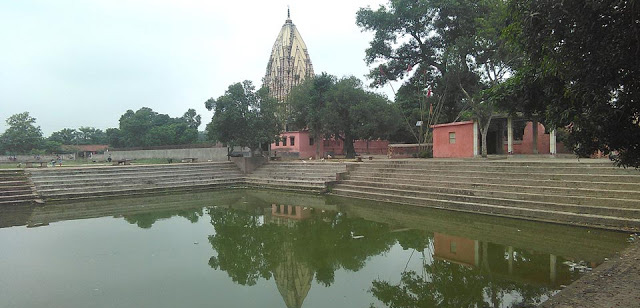
1. Legend of Ahilya: Ahilya Asthan is associated with the mythological story of Ahilya, a virtuous and pious woman who was cursed and turned into stone by her husband, Sage Gautama, due to a misunderstanding. According to Hindu mythology, Ahilya was later liberated from her curse by the touch of Lord Rama’s feet, symbolizing the power of forgiveness, redemption, and divine intervention.
2. Ahilya Kund: At the heart of Ahilya Asthan lies the sacred Ahilya Kund, a pristine water tank believed to be the spot where Ahilya was transformed from stone back into her human form by Lord Rama’s touch. Pilgrims visit the kund to take a dip in its holy waters, seeking purification and spiritual renewal. The serene ambiance of the kund creates a tranquil atmosphere conducive to prayer, meditation, and introspection.
3. Ahilya Temple: Adjacent to the Ahilya Kund stands the Ahilya Temple, dedicated to the revered Ahilya Devi. The temple’s architecture reflects a blend of traditional Mithila and Hindu architectural styles, with intricate carvings, colorful murals, and ornate sculptures adorning its walls and pillars. Devotees offer prayers and seek blessings at the temple, expressing their reverence and gratitude to Ahilya Devi for her divine grace and benevolence.
4. Cultural Significance: Ahilya Asthan is not only a place of religious worship but also a symbol of cultural heritage and spiritual legacy. The site is steeped in folklore, rituals, and traditions that have been passed down through generations, enriching the cultural fabric of Mithila. Pilgrims and visitors gain insights into the region’s mythological tales, customs, and beliefs, deepening their understanding and appreciation of its rich cultural heritage.
5. Festivals and Celebrations: Ahilya Asthan comes alive with vibrant festivities and religious observances throughout the year. Special events are held to commemorate Ahilya’s liberation and celebrate her divine grace. Devotees gather to participate in rituals, prayers, and bhajans (devotional songs), fostering a sense of community and spiritual camaraderie. The atmosphere is imbued with joy, devotion, and reverence, as pilgrims pay homage to Ahilya Devi and seek her blessings for spiritual enlightenment and liberation.
5. Chamunda Asthan : Mithila Tourist Places
Embodying the ageless virtues of devotion, protection, and divine grace, Chamunda Asthan shines as a beacon of spiritual enlightenment and cultural legacy. Pilgrims and tourists swarm to its hallowed grounds, drawn by the peaceful, heavenly presence of Goddess Chamunda, who offers them inspiration and consolation. In fact, Chamunda Asthan is a sanctuary of devotion rather than just a place of worship, where the spirit soars to new heights of enlightenment and spiritual awakening and the soul seeks refuge.

1. Origin and Mythological Significance: Chamunda Asthan is dedicated to Goddess Chamunda, a fierce and benevolent form of the Hindu goddess Durga. According to mythology, Goddess Chamunda is believed to have emerged from the wrathful manifestation of Goddess Kali to vanquish demons and protect devotees from evil forces. The temple’s origins date back centuries, steeped in the timeless tales of mythology and divine intervention.
2. Spiritual Retreat: Chamunda Asthan offers a tranquil retreat for seekers of spiritual solace and inner peace. Surrounded by lush greenery and serene landscapes, the temple premises provide a serene ambiance conducive to meditation, reflection, and prayer. Pilgrims embark on a spiritual journey, seeking to connect with the divine essence of Goddess Chamunda and receive her blessings for protection, prosperity, and liberation.
3. Architecture and Sacred Precincts: The temple architecture of Chamunda Asthan exudes a sense of grandeur and reverence, with its towering spires, intricate carvings, and ornate facades. Inside the sanctum sanctorum, devotees offer prayers and seek blessings from the divine idol of Goddess Chamunda, adorned with sacred adornments and embellishments. The temple complex also houses shrines dedicated to other Hindu deities, creating a vibrant tapestry of religious devotion and reverence.
4. Festivals and Celebrations: Throughout the year, Chamunda Asthan resonates with the joyous celebrations of festivals and religious observances. Special events are held to commemorate auspicious occasions such as Navaratri, Durga Puja, and Kali Puja, where devotees gather to participate in rituals, bhajans (devotional songs), and religious discourses. The temple premises come alive with devotional fervor and cultural vibrancy, fostering a sense of community and spiritual communion among pilgrims and visitors.
5. Cultural Heritage: Chamunda Asthan serves as a custodian of Mithila’s rich cultural heritage and religious traditions. The temple complex is adorned with ancient relics, artifacts, and scriptures that bear testimony to the region’s storied past and spiritual legacy. Pilgrims and visitors gain insights into the customs, rituals, and folklore that have shaped the cultural fabric of Mithila for generations, deepening their appreciation for its timeless heritage.
6. Mata Shyama Kali Mandir : Mithila Tourist Places
The Mata Shyama Kali Mandir is proof of the continuing force of faith, dedication, and divine providence. Its hallowed grounds are surrounded by the heavenly presence of Goddess Kali, who bestows protection, comfort, and spiritual enlightenment upon pilgrims and devotees who gather there. The Mata Shyama Kali Mandir is, in fact, more than just a place of worship—it’s a sanctuary of devotion where the spirit soars to new heights of spiritual awareness and emancipation and the soul finds refuge.

1. The Divine Presence of Goddess Kali: The Mata Shyama Kali Mandir is an embodiment of the divine presence of Goddess Kali, revered as the destroyer of evil forces and the bestower of blessings upon her devotees. According to Hindu mythology, Goddess Kali is depicted as a fearsome yet compassionate deity, symbolizing the eternal cycle of creation, preservation, and destruction. Her divine grace is believed to offer protection from malevolent forces and guide devotees on the path of righteousness and spiritual enlightenment.
2. Spiritual Significance: The temple serves as a sanctum of spiritual enlightenment and devotion, where pilgrims and visitors seek solace, guidance, and blessings from Goddess Kali. The serene ambiance of the temple premises creates an atmosphere conducive to prayer, meditation, and introspection, allowing devotees to connect with the divine essence of the goddess and find inner peace amidst the chaos of daily life.
3. Architectural Splendor: The Mata Shyama Kali Mandir is adorned with exquisite architectural details, reflecting the rich cultural heritage and artistic traditions of Mithila. The temple’s towering spires, intricate carvings, and vibrant paintings pay homage to the divine glory of Goddess Kali and create a sense of awe and reverence among devotees. Inside the sanctum sanctorum, the divine idol of Goddess Kali radiates with a divine aura, captivating the hearts and minds of worshippers who offer prayers and seek blessings.
4. Festivals and Celebrations: The Mata Shyama Kali Mandir resonates with the joyous celebrations of festivals and religious observances throughout the year. Special events are held to commemorate auspicious occasions such as Kali Puja, Navaratri, and Diwali, where devotees gather to participate in rituals, bhajans (devotional songs), and religious discourses. The temple premises come alive with devotional fervor and cultural vibrancy, fostering a sense of community and spiritual communion among pilgrims and visitors.
5. Cultural Heritage: As a custodian of Mithila’s rich cultural heritage and religious traditions, the Mata Shyama Kali Mandir plays a vital role in preserving and promoting the region’s ancient customs, rituals, and folklore. Pilgrims and visitors gain insights into the profound symbolism and spiritual significance of Goddess Kali, deepening their appreciation for the timeless heritage of Mithila and the divine grace that permeates the temple’s sacred precincts.
7. Shri Ugratara Asthan Mahishi : Mithila Tourist Places
The shrine of Shri Ugratara Asthan Mahishi is a place of great devotion, where the heavenly light of Goddess Ugratara shines with kindness and generosity. Upon arriving at its hallowed grounds, pilgrims and followers experience a feeling of divine calm and presence. They find comfort, safety, and enlightenment in the goddess’s benevolent embrace. In fact, Shri Ugratara Asthan Mahishi is a sanctum of devotion more than just a site of worship, where the spirit soars to new heights of spiritual awareness and emancipation and the soul finds sanctuary.
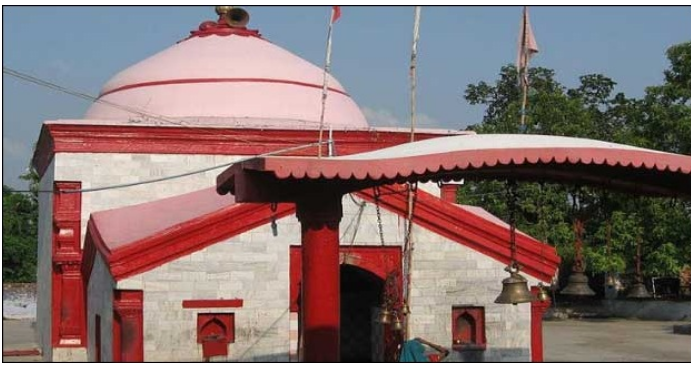
1. The Divine Essence of Goddess Ugratara: Goddess Ugratara, also known as Tara or Mahishamardini, is a revered deity in Hindu mythology, symbolizing the power of the divine feminine and the triumph of good over evil. She is depicted as a fearsome yet compassionate goddess, wielding weapons and slaying demons to protect her devotees from harm and suffering. The name “Ugratara” translates to “fierce star,” signifying the goddess’s radiant and formidable presence.
2. Spiritual Sanctity: Shri Ugratara Asthan Mahishi exudes a sense of spiritual sanctity and serenity, providing pilgrims and visitors with a sacred space for prayer, meditation, and introspection. The temple premises are adorned with lush gardens, ancient trees, and tranquil pathways, creating an ambiance conducive to spiritual contemplation and communion with the divine. Devotees gather at the temple to offer prayers, perform rituals, and seek blessings from Goddess Ugratara, finding solace and inspiration in her benevolent grace.
3. Architectural Splendor: The temple architecture of Shri Ugratara Asthan Mahishi reflects a blend of traditional Mithila and Hindu architectural styles, with its intricately carved pillars, ornate facades, and towering spires. The sanctum sanctorum houses the divine idol of Goddess Ugratara, adorned with sacred adornments and embellishments, radiating with a divine aura that captivates the hearts and minds of worshippers. The temple’s architectural splendor adds to the sense of reverence and awe that permeates the sacred precincts.
4. Festivals and Celebrations: Throughout the year, Shri Ugratara Asthan Mahishi resonates with the joyous celebrations of festivals and religious observances dedicated to Goddess Ugratara. Special events are held to commemorate auspicious occasions such as Navaratri, Durga Puja, and Kali Puja, where devotees gather to participate in rituals, bhajans (devotional songs), and religious discourses. The temple premises come alive with devotional fervor and cultural vibrancy, fostering a sense of community and spiritual communion among pilgrims and visitors.
5. Cultural Heritage: As a custodian of Mithila’s rich cultural heritage and religious traditions, Shri Ugratara Asthan Mahishi plays a vital role in preserving and promoting the region’s ancient customs, rituals, and folklore. Pilgrims and visitors gain insights into the profound symbolism and spiritual significance of Goddess Ugratara, deepening their appreciation for the timeless heritage of Mithila and the divine grace that permeates the temple’s sacred precincts.
8. Chandradhari Museum : Mithila Tourist Places
The Chandradhari Museum stands as a beacon of cultural preservation and heritage conservation, safeguarding the treasures of Mithila for future generations to cherish and admire. As visitors wander through its galleries, they are transported back in time to a bygone era of artistic splendor and intellectual enlightenment. Indeed, the Chandradhari Museum is not merely a place of artifacts but a living testament to the enduring legacy of Mithila’s rich cultural heritage.

1. Historical Background: Established in the early 20th century, the Chandradhari Museum was inaugurated by Maharaja Rameshwar Singh Bahadur himself, who had a keen interest in promoting art, culture, and education in his princely state of Darbhanga. The museum was initially housed within the Darbhanga Palace complex but was later relocated to its current location to accommodate its growing collection of artifacts and exhibits.
2. Architectural Splendor: The museum’s architecture reflects a blend of traditional Mithila and colonial influences, with its grand entrance, ornate columns, and spacious galleries. The building itself is a work of art, designed to showcase the museum’s extensive collection in a manner that is both aesthetically pleasing and culturally enriching. Visitors are greeted with a sense of grandeur as they step into the museum, setting the stage for a journey through the rich history and heritage of Mithila.
3. Cultural Treasures: The Chandradhari Museum houses a diverse collection of artifacts spanning various periods of Mithila’s history, including sculptures, pottery, coins, textiles, and decorative arts. Of particular note are the exquisite Madhubani paintings, for which Mithila is renowned. These vibrant artworks depict scenes from Hindu mythology, everyday life, and cultural traditions, showcasing the artistic prowess and cultural vibrancy of the region.
4. Manuscripts and Documents: In addition to its art collection, the Chandradhari Museum boasts an impressive array of ancient manuscripts, documents, and archival materials. These priceless artifacts offer valuable insights into Mithila’s intellectual and literary heritage, including texts on philosophy, religion, literature, and science. Scholars and researchers flock to the museum to study these rare manuscripts and unravel the mysteries of Mithila’s past.
5. Educational and Cultural Hub: The Chandradhari Museum serves as more than just a repository of artifacts; it is also a hub for education, research, and cultural exchange. The museum regularly hosts workshops, seminars, and cultural events aimed at promoting awareness and appreciation of Mithila’s heritage. School children, scholars, and tourists alike benefit from the museum’s educational programs, gaining a deeper understanding of Mithila’s rich cultural tapestry and its significance in the broader context of Indian history and civilization.
9. Rajnagar Ruins : Mithila Tourist Places
The Rajnagar Ruins invite tourists to take a trip back in time and investigate the mysteries of the past, serving as a monument to the continuing legacy of Madhubani’s ancient culture. In order to ensure that Rajnagar’s historical echoes live on for future generations, it is our duty as custodians of this legendary legacy to save and conserve these antiquated relics.
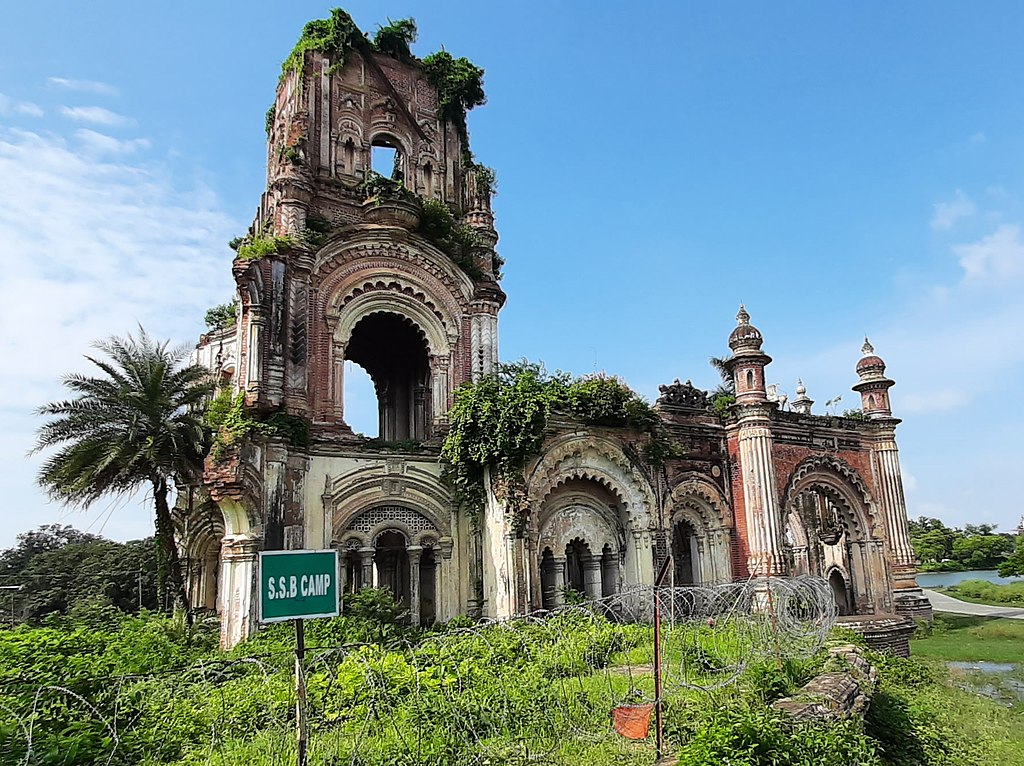
1. Historical Significance: The Rajnagar Ruins are steeped in historical significance, with traces of ancient settlements dating back over two millennia. Believed to have been inhabited during the Mauryan and Gupta periods, these ruins provide valuable insights into the socio-economic, political, and cultural life of ancient Madhubani. Scholars speculate that Rajnagar may have served as an important administrative or trading center, linking the region to broader networks of commerce and culture.
2. Archaeological Marvels: The ruins of Rajnagar comprise a complex network of structures, including ancient temples, stupas, monasteries, and residential buildings. The architectural remnants bear witness to the artistic prowess and engineering ingenuity of ancient craftsmen, with intricate carvings, ornate pillars, and decorative motifs adorning the ruins. Archaeological excavations have unearthed a treasure trove of artifacts, pottery, coins, and inscriptions, shedding light on the daily lives, religious beliefs, and artistic traditions of the people who once inhabited Rajnagar.
3. Cultural Heritage: The Rajnagar Ruins are an integral part of Madhubani’s cultural heritage, serving as a reminder of the region’s rich and diverse history. The site has inspired local folklore, legends, and myths, with tales of ancient kings, dynasties, and battles echoing through the ages. Visitors to the ruins can immerse themselves in the evocative atmosphere of the past, tracing the footsteps of ancient inhabitants and marveling at the enduring legacy of Madhubani’s ancestors.
4. Preservation Efforts: In recent years, efforts have been made to preserve and protect the Rajnagar Ruins as a heritage site of national importance. Archaeological surveys, conservation projects, and site management initiatives have been undertaken to safeguard the ruins from environmental degradation, vandalism, and encroachment. Interpretive signage, visitor centers, and guided tours have been introduced to enhance public awareness and appreciation of the site’s historical significance.
5. Tourism and Cultural Tourism: The Rajnagar Ruins have emerged as a popular tourist destination and cultural attraction in Madhubani, drawing visitors from across India and around the world. Tourists and history enthusiasts flock to the site to explore its ancient remnants, soak in its tranquil ambiance, and unravel the mysteries of its past. The ruins also serve as a focal point for cultural tourism, with festivals, exhibitions, and heritage walks organized to celebrate Madhubani’s rich cultural heritage and promote community engagement.
10. Vikramshila University Ruins : Mithila Tourist Places
The Vikramshila University Ruins are a monument to the great legacy of knowledge and scholarship that once flourished in the area. They are situated close to the town of Bhagalpur in the Indian state of Bihar. One of the most famous educational institutions in ancient India, Vikramshila University was founded in the eighth century CE by King Dharmapala of the Pala dynasty and drew intellectuals and students from all across the country. The ruins of this venerable institution continue to astonish and venerate tourists while providing a window into its storied past.

1. Historical Significance: Vikramshila University was established during the reign of the Pala dynasty, a period known for its patronage of Buddhism and intellectual pursuits. The university was named after King Vikramashila, a legendary ruler renowned for his patronage of learning and scholarship. Over the centuries, Vikramshila University emerged as a prestigious center of Buddhist studies, attracting scholars and practitioners from across India and beyond.
2. Architectural Marvels: The ruins of Vikramshila University comprise a complex network of structures, including monastic cells, meditation halls, lecture halls, and stupas. The architecture of the university reflects a blend of Buddhist and Indian styles, with intricately carved pillars, ornate sculptures, and decorative motifs adorning the ruins. Despite centuries of decay and neglect, the grandeur of Vikramshila’s architectural marvels continues to captivate the imagination of visitors.
3. Educational Legacy: Vikramshila University was renowned for its curriculum, which encompassed a wide range of subjects, including Buddhist philosophy, logic, grammar, medicine, and astrology. The university attracted eminent scholars such as Atisha Dipankara, Dharmapala, and Naropa, who contributed to its intellectual and spiritual legacy. The rigorous academic environment of Vikramshila fostered a culture of learning and inquiry, shaping the minds of generations of scholars and practitioners.
4. Cultural Heritage: The ruins of Vikramshila University are an integral part of Bihar’s cultural heritage, serving as a symbol of the region’s rich intellectual and spiritual traditions. The site has inspired works of art, literature, and poetry, with poets and historians extolling its virtues and lamenting its decline. Efforts have been made to preserve and protect the ruins as a heritage site of national importance, ensuring that the legacy of Vikramshila University continues to inspire future generations.
5. Tourism and Pilgrimage: In recent years, the Vikramshila University Ruins have emerged as a popular tourist destination and pilgrimage site, attracting visitors from across India and around the world. Tourists and history enthusiasts flock to the site to explore its ancient remnants, contemplate its spiritual significance, and pay homage to the scholars and practitioners who once walked its hallowed halls. The ruins also serve as a focal point for cultural tourism, with festivals, exhibitions, and guided tours organized to celebrate Bihar’s rich cultural heritage and promote community engagement.
| Mithila Panchang 2023-24 PDF | Download Now |
| Vivah Din 2024 | Click Here |
| Dwiragaman Din 2024 | Click Here |
| Panchak 2024 | Click Here |
| Upnayan and Mundan Din 2024 | Click Here |
| Gharvas Din 2024 | Click Here |
| Maithili Language : Official Language of India |
Click Here |
| Top 10 Mithila Painting January 2024 | Click Here |
| Top 5 Mithila Paintings | Click Here |
| Top 10 Tila Sankranti Maithili Geet | Click Here |
| Top 10 Madhubani Painting Artist | Click Here |
| Top 10 Maithili Film |
Click Here |
| 100+ Maithili Fakra | Click Here |
Frequently Asked Questions (FAQ) on Mithila Tourist Places
1. What are some must-visit tourist places in Mithila?
- Mithila offers a plethora of attractions for tourists, including historical sites like Darbhanga Fort and Janakpur Dham, cultural landmarks like the Chandradhari Museum and Vikramshila University Ruins, and natural wonders like Punaura Dham and Rajnagar Ruins.
2. How can I travel to Mithila?
- Mithila is accessible by road, rail, and air. The region is well-connected by national highways and state roads, with frequent bus services from neighboring cities. Train services also operate to major towns in Mithila, while airports in nearby cities like Patna and Kathmandu provide air connectivity.
3. What is the best time to visit Mithila?
- The best time to visit Mithila is during the winter months (November to February) when the weather is pleasant and conducive to sightseeing. However, festivals like Chhath Puja and Durga Puja attract a large number of visitors during specific times of the year.
4. Are there any cultural events or festivals in Mithila?
- Yes, Mithila is known for its vibrant cultural festivals and events. Celebrations like Chhath Puja, Durga Puja, Holi, and Diwali are widely observed with great enthusiasm and fervor, offering visitors a unique opportunity to experience the region’s rich cultural heritage.
5. Is it safe to travel to Mithila as a tourist?
- Yes, Mithila is generally considered safe for tourists. However, as with any travel destination, it is advisable to take standard precautions such as safeguarding valuables, being aware of your surroundings, and following local customs and regulations.
6. What are some popular activities to do in Mithila?
- Popular activities in Mithila include visiting historical landmarks, exploring cultural institutions and museums, participating in religious festivals and rituals, shopping for traditional handicrafts and artifacts, and enjoying the scenic beauty of the region’s natural landscapes.

